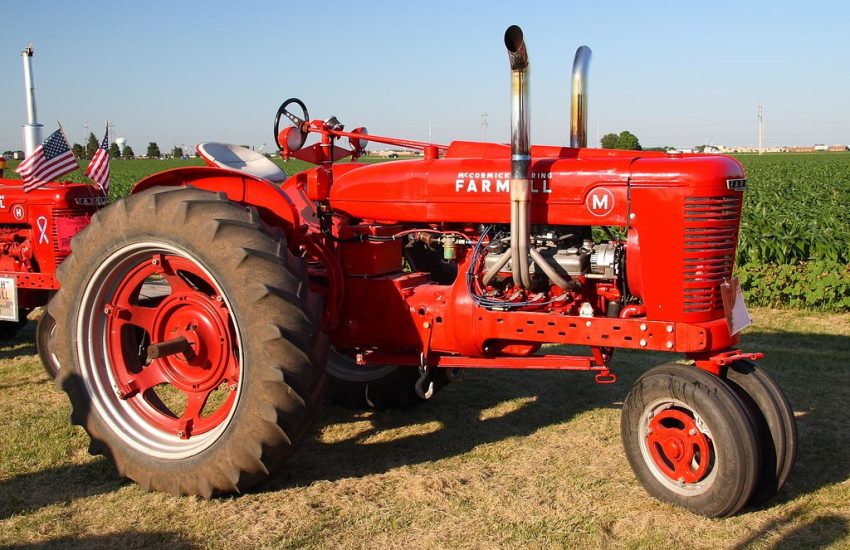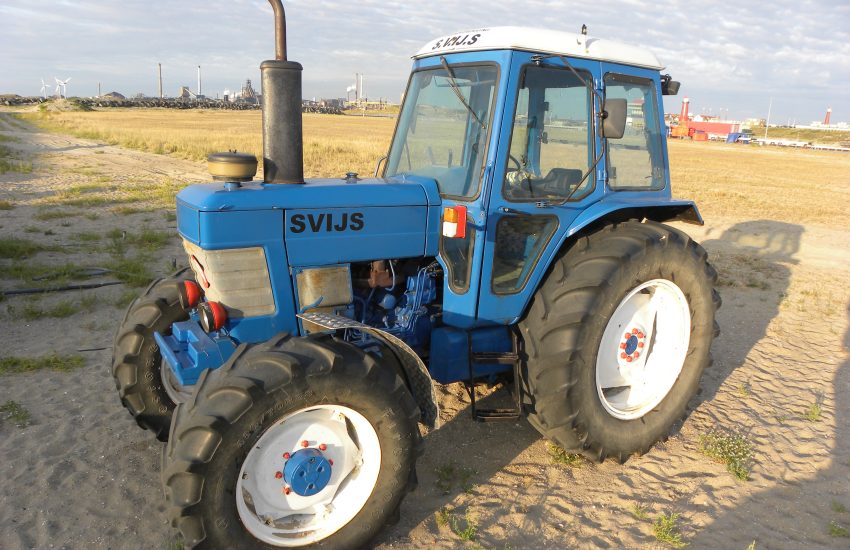5 Common Problems with John Deere 4120 (Solutions Included)
John Deere 4120 is a compact utility tractor from their 4000 Twenty Compact Series. It uses a John Deere 2.4L 4-cylinder diesel engine. It is a reliable machine with loaders too, for daily usage.
However, the most common problems with this one are the cold starting issues, ignition issues, hydrostatic problems, smoking from the exhaust, failure under load and sensor issues.
In this article, I have done plenty of research and accumulated information about all these problems. You will also find full proof fixes here regarding these issues.
Problems and Solutions at a Glance:
| Problems with John Deere 4120 | Solutions |
| Cold Start Issues | Troubleshoot PTO switch and others; install an intake warmer. |
| Hydrostatic Problems | Troubleshoot or replace the PTO clutch, sensors, solenoid, O-rings etc. |
| Fuel Injector Issues | Replace fuel injectors. |
| Failure Under Load | Troubleshoot front and back pedals, potentiometer etc.; Manipulate loadmaster wisely. |
| Sensor Problems | Replace sensor. |
5 Most Common Problems with John Deere 4120 and Their Possible Solutions:
Many common John Deere 4120 problems are dealt with by the owners. Here are some of the problems and how to solve them.
1. Cold Start Issues
The JD 4120 has trouble starting when the temperature drops below 30 degrees Fahrenheit. You may have changed the filters, added algicide and additives for anti-gelling, and did necessary troubleshooting.
But even changing the batteries and servicing the glow plugs often will not solve the issue. If it does start, it makes a lot of white smoke and stumbles around before finally settling down and running smoothly.
The Fix:
Unfortunately, this is how the 4-cylinder JD behaves in the winters. Other issues can be the PTO issue, seat safety switch etc. In which case they will need to be replaced.
Install an intake warmer instead of a glow plug for the winter problem. Turn the key in for 15 seconds to warm the air. Additionally, turn on the tractor while holding the key in place and keep holding it until the engine idles smoothly.
Before it idles smoothly, there is a stuttering period of roughly 10 to 15 seconds. Additionally, if you’ll slightly increase the throttle immediately before starting, the tractor will go smooth faster.
2. Hydrostatic Problems
The hydrostatic problems manifest as a tiny “jerk”. The “jerk” happens more frequently as the tractor becomes hotter. It feels like a brief lock and release of the wheels. You may find dirty engine oil.
However, changing the filters and oils, and cleaning the suction filter with the tractor’s gearbox and hydraulic oil out may not solve the issue.
You will experience it in both the 2-wheel drive and 4-wheel drives. It happens whether or not the PTO is activated. And whether or not the loader is being utilized (or installed).
You may also get a Throttle Sensor Error 08 code. Additionally, you may get an out-of-range or uncalibrated voltage signal, lack of an anti-stall feature, or performance loss etc.
The Fix:
The issue may be brakes and brake sensors. Or a solenoid heating up. The issue briefly stops the hydraulic flow that drives the wheels.
Disable the Loadmatch to see if it solves your issue. Next, check the LVA14167 inline oil filter from the oil cooler. Inspect the screen for damage.
Check the suction line to the two hydraulic pumps. If there is any evidence of oil at the rubber tube near the pumps or at the filter end, you might be sucking air into the hydrostatic charge pump.
Replace the rubber tube’s clamps with stainless worm/screw clamps. Then check to see that the manifold connecting the two pumps is securely fastened to each pump. Request the dealer to check the MFWD sensor if nothing else works.
Your front axle may also be the issue. Finally, check for broken gear. The sensors for the seat and pedals may also be the issue.
3. Fuel Injector Issues
You may notice heavy exhaust smoke coming out. There may be a lack of firing on all cylinders. A malfunctioning fuel injector and some kind of leak may be the issue.
The Fix:
Replacing the fuel injectors is the fix to this problem. The fuel injectors can get damaged due to bad fuel getting past the filter.
4. Failure Under Load
On a 4120, when you turn the load switch to “on,” the drive won’t move the tractor unless the tractor is running at 1500+ RPMs. It happens due to load match.
The error code 01 may flash on the dashboard. The tractor will refuse to move forward or backward. This may be a problem with the potentiometer for the forward pedal.
It could be broken or need to be reset. Additionally, if you’ve been driving through bushes, something might have caught on a wire under the tractor and pulled it free. Wires aren’t always tied down and tucked away properly.
The Fix:
There’s little you can do about the loadmatch. It’s just by design of this tractor. Troubleshoot the PTO clutch, front and back pedals, solenoid, O-rings, wires etc. Replace if necessary.
Load match is a better governor that is controlled by the CPU and a good anti-theft feature. Its job is to keep the RPM from stopping. Don’t use it in any other gear than A or B, and only at high RPMS (2000 or up).
5. Sensor Problems
A big sign of bad sensors is that the tractor is hard to start when it’s cold. The engine will start and then stop. It will start up again, but you will have to crank it a lot.
Additionally, when driving with or without loadmatch on, the engine revs up and down by about 300 RPM. This may be due to the MFWD speed sensor.
The problem can be either with the fuel shut-off solenoid or with the wires that go to it. The tractor will just stop suddenly without a change of RPMSs.
Before it will move again, you may have to take your whole foot off the pedal. This seems to happen with or without a load.
There are error codes for the forward and reverse pedal sensor being above or below normal or out of range/out of calibration. It indicates a pedal was shorted to ground or higher.
The instrument controller (also called the dashboard or ICC) can find errors. Include the transmission control unit (TCU) as well. All of them have screens on the dashboard.
If the seat sensor was broken, the tractor would stop and not move until the hydro pedal was released all the way. Most likely, there wouldn’t be an error code.
The Fix:
Conduct tests to find each specific sensor. Replace when damaged.
What Majority of the Users Feel?
The John Deere 4120 is a reliable machine. This model doesn’t have any kind of emission controls though. It gets the best use from early spring to early winter by the users.
Everyone finds it simple and easy to use. The 4120 is better for snow in narrow places, but only for light snow. It does great with a 400X loader with 73-inch heavy-duty bucket with cutting edge.
Overall, this is a tractor that everyone’s satisfied with.
Frequently Asked Questions
What is a good back hoe to use with the JD 4120?
485 Backhoe with 18″ bucket.
Which JD implement is best on a 4120 for implements?
JD skid steer attachment carrier.
How many HP is a John Deere 4120?
43.1 HP.
Final Thoughts
After research, I can say that the JD 4120 is a satisfactory tractor overall. It does come with some problems but these are not highly specific. Generalized problems happen with any tractor. And this one seems to be worth the bargain!
Related Posts:


